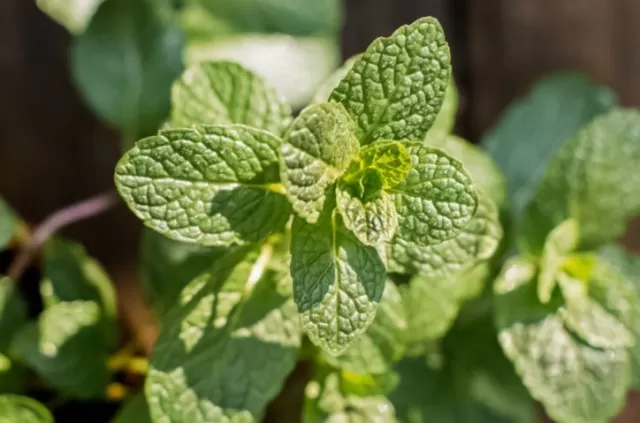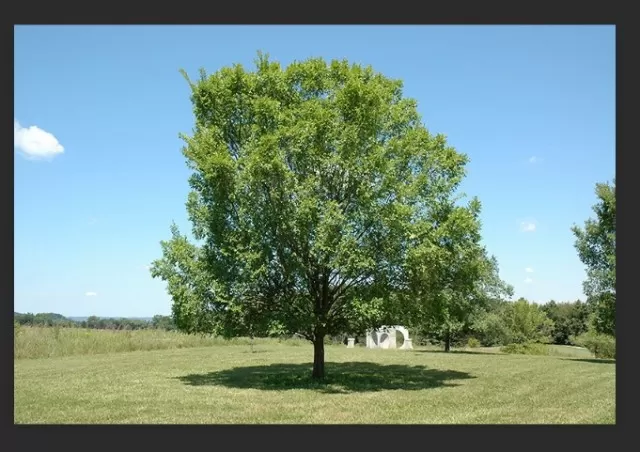Surprising Weeds Disguised as Plants. The boundary that separates a deliberately cultivated plant from an uninvited interloper often blurs, leaving us in a state of botanical contemplation. In the intricate tapestry of a garden, nature employs a palette both diverse and interconnected, where plants of purpose and those deemed pesky coexist in a dance of contrasts.
Amidst this harmonious chaos, the perception of worthiness is molded by perspective. What one gardener labels as a cherished perennial, another might classify as an invasive weed. A flower celebrated for its beauty in one corner might be dismissed as a disruptive intruder when it encroaches upon another’s cherished landscape. In this dynamic interplay, the very essence of a plant’s identity can shapeshift like a chameleon, conforming to the observer’s desires and preferences.
It’s within this paradox that we confront the enigma of nature’s diversity—a reminder that even amidst apparent discord, there is a nuanced symbiosis at play. The stubborn dandelion poking through a crack in the pavement or the tenacious ivy clinging to a fence both represent life’s unrelenting will to flourish, even in the face of adversity.
Exploring the Enigma of Weeds: Unveiling Nature’s Unwanted Wonders

Within the realm of flora, the term “weed” encapsulates the essence of any plant that thrives uninvited.
In an era where gardening embraces a tapestry of perspectives, nearly every botanical specimen finds itself amid a blend of advocates and critics, a dichotomy shaped solely by the observer’s gardening ethos. The very definition of a weed rests in the eyes of the cultivator.
Consider, for instance, the juxtaposition of a rose bush—a symbol of beauty—now imagined as a weed should it emerge amidst rows of vegetables.
The essence of a plant’s worth can oscillate remarkably, performing indispensable roles within one corner of the garden while wielding the potential to conquer the entire landscape if granted the slightest freedom. The transformation from a botanical misfit into a treasured garden resident hinges on the meticulous care and attention administered by the gardener.
Venturing beyond the confines of conventional wisdom, this discourse embarks upon an odyssey of discovery—a revelation of 13 plant species that defy common perception and reveal their unexpected status as weeds.
These botanical undercover agents challenge preconceived notions, beckoning us to reconsider the very fabric of our gardens. For in the intricacies of their existence lies a profound lesson: the botanical world is a canvas painted with perspectives, and the journey of cultivation can unveil the true essence of what we call a “weed.
“.
Bermuda Grass: A Dual-Faced Green Wonder
Spanning its geographical domain, Bermuda grass emerges as a remarkably adaptable lawn variety and a valuable asset to pasturelands.
Its reputation as an effortlessly flourishing turf is well-earned, coupled with its proficiency in regrowth following disturbances. However, this botanical triumph carries an unintended consequence—its formidable, far-reaching roots and stolons exhibit a tenacious penchant for trespassing over concrete expanses and infiltrating meticulously crafted garden sanctuaries. .
Struggles to rein in the exuberance of Bermuda grass through manual interventions, such as uprooting or tilling, unravel a disheartening twist: each minuscule fragment of root, stem, or leaf left behind has the latent potential to sprout into an independent entity.
Thus, these well-intentioned endeavors inadvertently fuel the grass’s relentless expansion. A paradox emerges where the pursuit of control unwittingly fosters its proliferation.
The saga of Bermuda grass unveils a fundamental truth: within its very resilience resides its Achilles’ heel.
In the ceaseless quest for a viable solution, emerges a resolute victor—frequent applications of weed-killing agents stand as the sole strategy that offers both efficacy and efficiency. This battle of botanical wits underscores the complexity of managing an organic world that dances at the border between benefactor and adversary, where even the simplest of remedies necessitates a nuanced understanding.
Lacebark Elm: A Tree of Exquisite Contrasts and Prolific Seeds

Gracefully adorned with an enchanting exfoliating bark motif and endowed with a growth rate that borders on the swift, the lacebark elm stands as a near-ideal candidate for the coveted role of a shade tree.
Its silhouette, reminiscent of a stately vase, offers a picturesque canopy that beckons admiration. Yet, an intricate narrative of balance unfolds, an intricacy often found within nature’s grand designs.
However, this arboreal gem is not without its enigma.
Amidst its attributes lies a curious paradox—the profusion of viable seeds it produces, a testament to its fecundity. These seeds embark on journeys of considerable lengths upon the wind’s whims, seeding new territories far from their maternal tree.
A dichotomy materializes where admiration for one tree transcends into a conundrum of abundance. The adoration for the lacebark elm morphs into an unintended yet profound challenge.
A tapestry of emotions surfaces as one comes to realize that the love for this tree translates into an ever-growing tapestry of elm seedlings.
The landscape that was once a stage for a singularly majestic tree now welcomes the emergence of countless offspring, each a testament to the enduring spirit of nature’s propagation. This arboreal tale invites us to reflect on the intricate dance of coexistence and the interplay between a tree’s allure and its inherent life cycle.
In the duality of the lacebark elm, we uncover a narrative that mirrors life’s harmony and its unpredictability.
The embrace of its beauty may unleash a cascade of new life, urging us to find equilibrium between admiration and practicality, between the majestic canopy and the prolific seeds that scatter like whispers on the wind.
Morning Glory: Nature\’s Ephemeral Splendor and Tenacious Legacy
As dawn paints the canvas of the garden, morning glory vines unfurl their vibrant petals, adorning fences and arbors with a symphony of trumpet-shaped blooms.
Their resplendent hues serve as a beacon, inviting an eclectic congregation of nectar-seeking pollinators. In this dance of life, morning glories manifest both beauty and ecological benevolence.
In a world where nature’s hues sometimes blur into monochrome, these vines emerge as an effervescent counterpoint.
Their arrival, as the garden’s vibrancy begins to wane, is akin to a welcome interlude—a burst of color that whispers promises of continuity. Their presence bridges the seasons, turning gardens into enchanting realms of fleeting charm and perpetual transition.
Yet, as with many treasures, morning glories harbor a secret challenge, veiled amidst their resplendent blooms.
The transformation from flowers to seeds marks a pivotal juncture. A seemingly innocuous act—the scattering of seeds—ushers in a new chapter of their story, one fraught with tenacity and resilience.
The annual life cycle holds within it a paradox: the convenience of self-reseeding offers a respite from human intervention, while simultaneously sewing the seeds of a future struggle.
These botanical marvels, though transient in nature, plant seeds that transcend seasons.
As the cycle comes full circle, the canvas of disturbed soil becomes their stage. Vegetables and flowers stand in the way of their voracious quest for life, transforming admiration into a battle for coexistence.
The intricate relationship between their allure and their persistence epitomizes the delicate equilibrium in which nature’s beauty flourishes.
Morning glory embodies a poignant lesson—a reminder that beauty often comes with a price.
It’s a reminder that nature’s harmony is both enchanting and demanding, as each ephemeral bloom becomes a testament to the intricate interplay between aesthetics and survival, between allure and adaptation.
Mint: A Versatile Herb\’s Tempting Allure and Taming Strategy

In the realm of herbs, mint stands as a versatile virtuoso, boasting an impressive array of applications and an abundance of captivating varieties.
Its allure is difficult to deny, as it thrives with ease, beckoning both novice and seasoned gardeners alike. However, within its aromatic leaves lies a duality that demands respect—an exuberance often concealed by its culinary and aromatic charm.
Much like its counterparts on this roster of botanical marvels, mint possesses roots that harbor a voracious tenacity, enabling it to conquer landscapes with breathtaking swiftness.
As it unfurls its verdant carpet, the very quality that makes it so desirable can transform into a challenge for those unprepared. Yet, in this transformation, an opportunity for coexistence emerges.
To contain the spirited spirit of mint, a strategic approach comes to the forefront—a method as simple as it is effective.
The key lies in elevation and restraint: planting mint within a container lifted from the embrace of the earth. This tactical decision curtails the herb’s unbridled ambition, granting the gardener a measure of control while preserving the verdant treasure within manageable boundaries.
Mint embodies the essence of botanical diplomacy—a harmonious compromise between human intention and nature’s propensity.
Its journey from temptation to management symbolizes the delicate balance required to harness the power of the natural world. Amidst its fragrant leaves, we find a lesson that transcends horticulture—a lesson in embracing the intrinsic vigor of life while nurturing a symbiotic relationship between cultivation and constraint.
*The information is for reference only.